Stroom Invest interview / artist Gabriela Acha
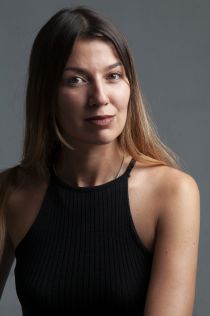
Acha carries a transparent glass cabinet like a backpack. At first glance, the cabinet appears empty, but the side on her back is made of mirror glass and reflects the surroundings. Suddenly, Acha starts singing. Her voice and lyrics are captivating and moving. With her walking exhibition, Acha explores the possibilities of an active and mobile museum. According to her, Western museums present themselves with their collections as colonial, white and patriarchal institutions. Is it time to change that image? With her performances Acha enters into a critical dialogue with existing museum collections.
You were born in Argentina. How did you end up at Stroom in The Hague?
“In 2014 I graduated from the Faculty of Arts with a specialisation in sculpture at the National University of Cordoba. Four years ago, I came here to study art science. Two years later I graduated with a Master’s degree in Art Science from the Royal Academy of Art in The Hague. I am now part of Stroom’s platform and I live in The Hague.”
What is the difference between the contemporary art scene in your hometown Cordoba and in The Hague?
“I have the impression that artists in Argentina are more inclined to work together. Working together as more valuable and easier to me than doing everything alone.”
Speaking of collaboration, since 2014 you have been part of the Expedición collective that links art and natural science. What interests you about the connection between art and natural sciences?
“Yes, I am part of an Argentine group of artists, researchers and scientific illustrators called Expedición. Scientists and artists, each in their own way, approach nature as a study object to get to know the world and find out how it works. I am interested in observing and representing nature and to share and compare our methodologies. For example, I spent several days in a nature reserve together with a botanist and a paleontologist. We studied plants and animals together. How do art and science differ? Each field has its own approach to understanding nature. Sharing these experiences leads to artworks as a collective or to individual artworks.”
Are you currently working on a project as a collective?
“No, we have not realised a project together in recent years. But the collective still exists and we still share ideas and experiences. We stay in touch and meet up when I am in Argentina.”
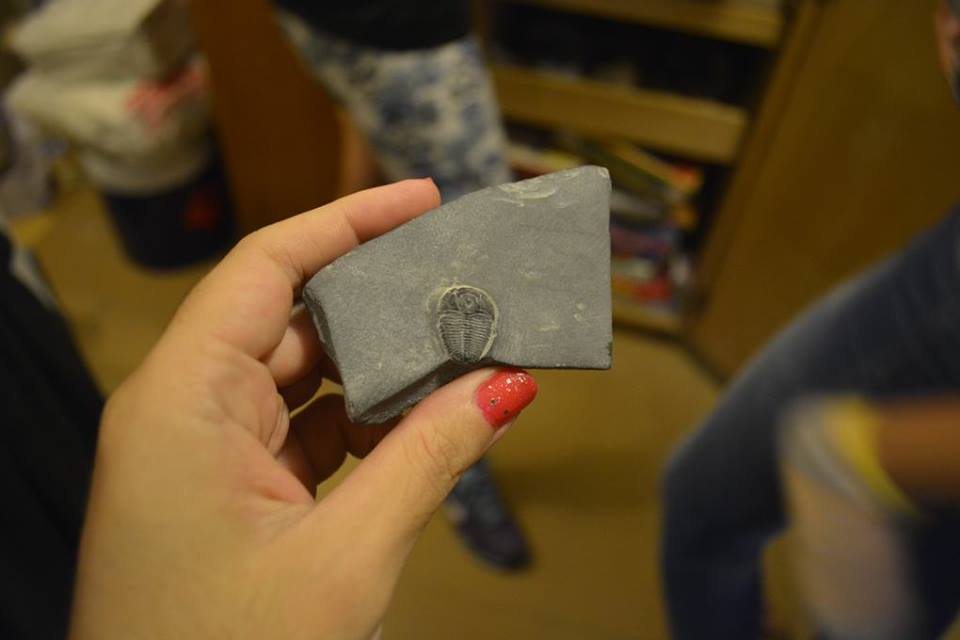
The starting point of your individual work is collecting. What do you like to collect?
“Collecting is an obsession for me. I have been collecting fossils, minerals and antiques since I was a child and I keep everything in my parents’ house, Argentina. Things keep coming while I do not organise them in any particular way. It is like a cabinet of curiosities. I am attracted to certain objects; I take care of them and I feel good when I am surrounded by my collection. As a child, I imagined that one day I would have a museum. In 2016, a curator invited me to show my collection. Through an advertisement in the local newspaper, people were invited to see my collection in my parental home. As I showed the objects to the visitors, I told anecdotes about where I found or got something. It was a nice experience and for a moment it felt like I had my own museum with my collection.”
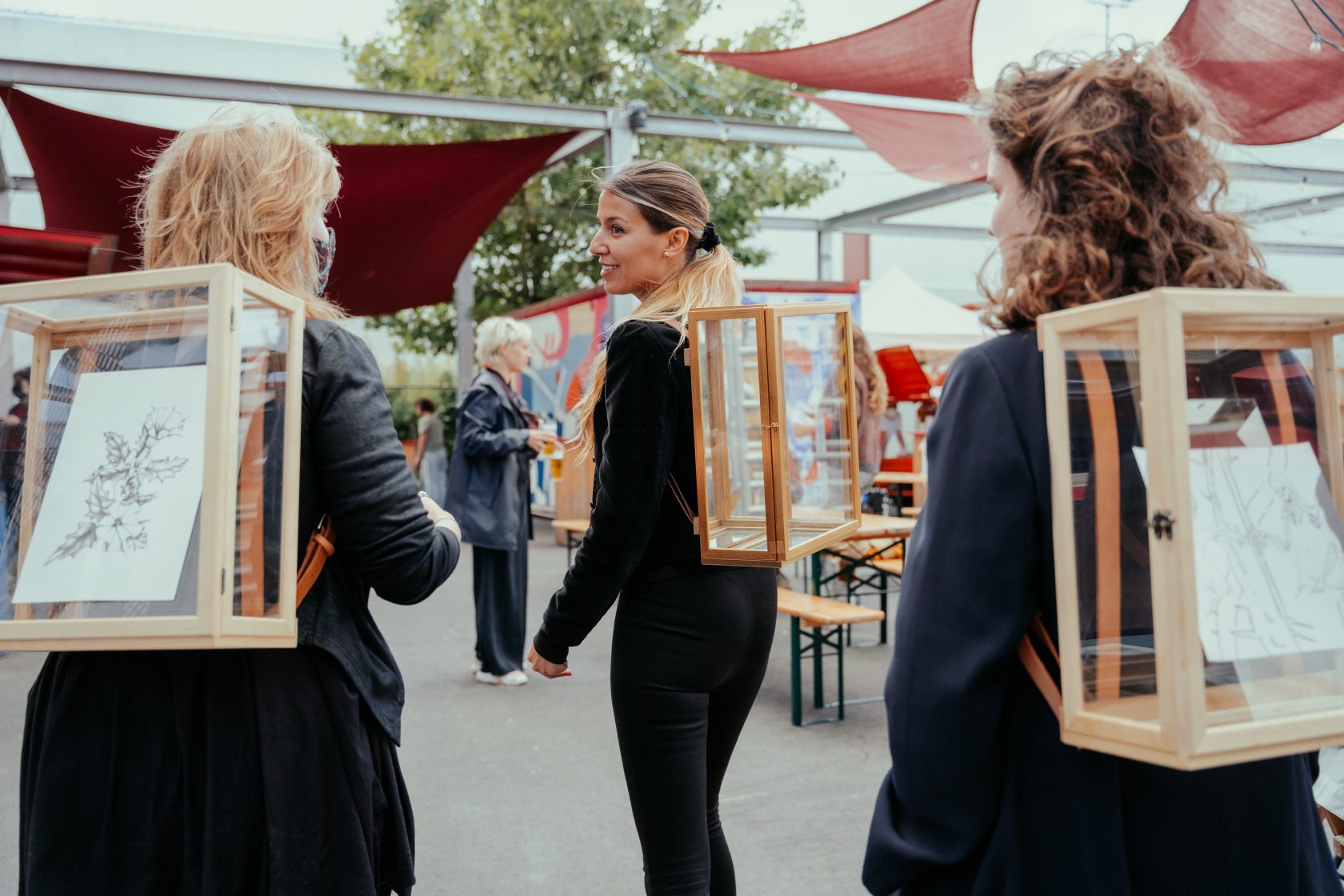
How did you come up with the idea of creating a mobile museum?
“In the first place, by developing this glass cabinet like a backpack, I wanted to show my private collection to a public. It also has to do with caring for and preserving things and memories from the past. We always build on the knowledge we have. We base what we know on what remains from the past. We project a story about what it would have been like, knowing that it is only a perspective viewed from a specific place, time or person. My mobile exhibition space is also a way to cooperate with many museums and institutions and gain insight into their collections. I like to examine the collections to see who or what they represent. Are minorities, such as women or certain population groups, adequately represented? My mobile exhibition space is feminist and decolonial. The nice thing about my mobile museum is that I try to establish a relationship with an existing museum collection and I can also approach visitors and talk to them about their findings. My interest lies in making space for memories that should also be part of history, for example of people we have unjustly forgotten. With my work, I try to record those memories, evaluate them and bring them to the attention.”
There are two versions of the glass cabinets that you carry on your back.
“Yes, each time it is a performance that translates the static fact of a museum into a mobile exhibition space. One version contains a transparent cabinet with drawings or objects. It is about several backpacks worn by different performers. The other is a gold version without objects. The frame is made of gold leaf, the back of the cabinet is made of mirror glass.”
Why do you often show natural elements covered with a thick layer of resin in those cabinets with objects?
“I use all kinds of techniques and materials, but I prefer drawing and working with resin. My father works with resin and metal, so I learned to work with that from an early age and also later during my education as a sculptor. I cover plants, minerals, branches or seeds with many layers of resin. It is a long process, in which I put drops of resin on top of each other. I also cover succulents with resin, but they contain so much water that they dry out and disappear. The treatment with resin is my way of drawing attention to the preservation of objects and the transience of everything. The result reminds me of stalactites or fossils. Besides sculptures, drawing and performances, I work with various media. I also produce texts, songs, videos and photograms.”
You sang for me while wearing the gold version of your mobile museum. Can you explain the context of that performance?
“Stroom supported me to go to Genoa in 2021, more specifically to the Museum of the World Cultures in Castello d’Albertis. I placed my installation ‘Every Museum is a Trap’ at the entrance. From where I did that performance in the castle, I could see the harbour through the window. From that place some of my ancestors emigrated to Argentina hundreds of years ago. Since my family split up there, it is a special place for me. My work is also about memories and how museums produce them through what they show. My interest is in how that happens socially and how private and public aspects connect. Throughout history there are stories that remain and others that disappear. In Castello d’Albertis I showed a golden amulet with the image of Saint Theresa. It belonged to my grandmother and I received it from my mother when I graduated. During my performance, I sang one of my mother’s favorite songs.
‘Donde quiera que estes’ is my mother’s favorite song by the Spanish singer Joan Manuel Serrat. The song says ‘wherever you are you might like to know that that even if the times where difficult I did not sell your silk scarf for a piece of bread. And that even when I was really tired, I did not abandon your memories by the side of the road, and even if a sad night was cold, I did not throw your kisses into the fire. Wherever you are, and if you remember me’. For me, that is a tribute to my ancestors and the sign that things happen the way they do. I love these performances with my mobile museum. It is a personal and intimate way of showing something because it is always done for a few people or a group of people. That gives me a different experience every time. It allows unexpected things and I immediately receive feedback from the visitors. That makes it so enriching. The mobile museum is a project that I will continue and would like to develop further.”
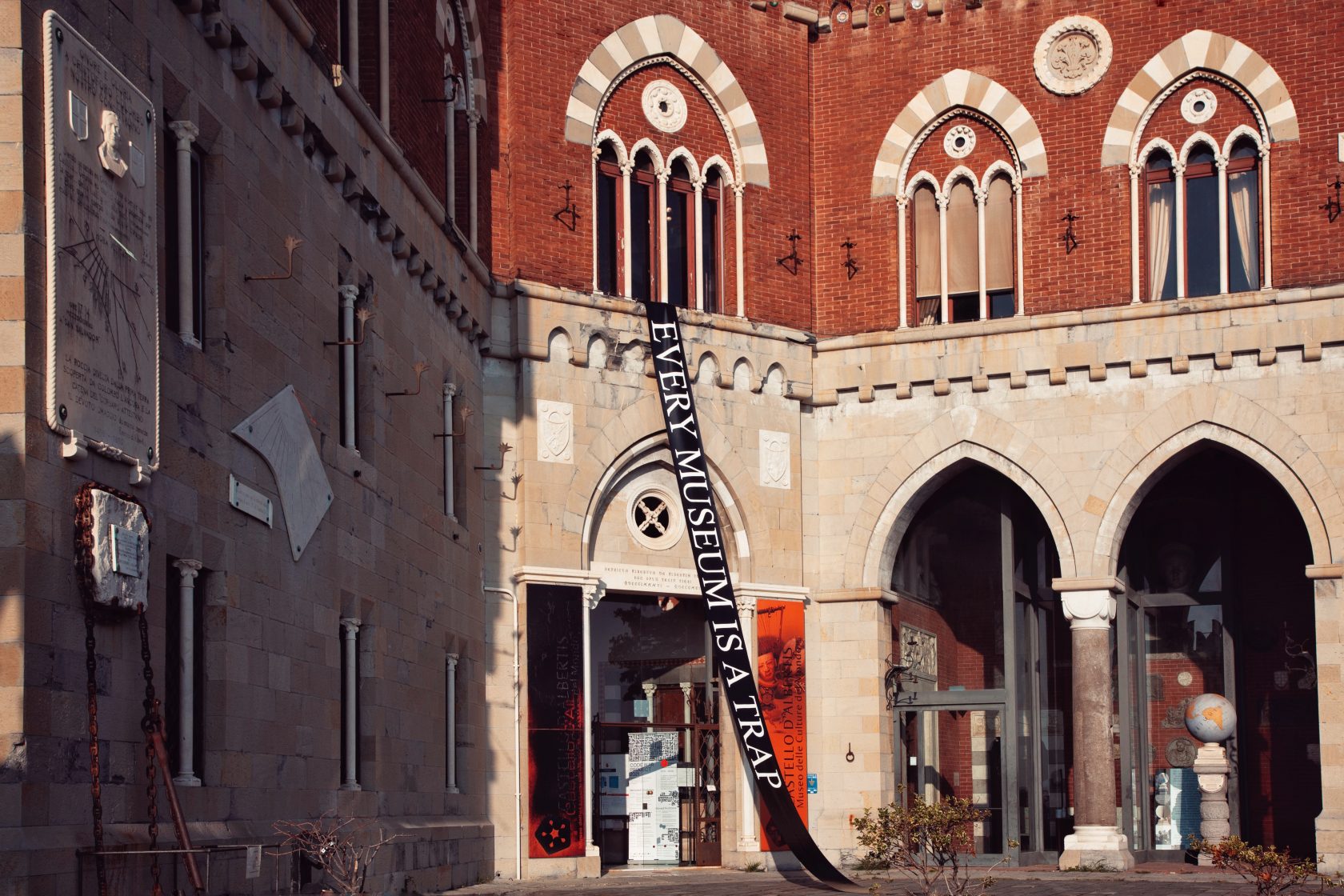
What do you mean by ‘Every Museum is a Trap’?
“A museum is an institution that builds memories and presents a certain vision of an existing phenomenon. It shows a selection of pieces, which support and disseminate a certain discourse. Some voices are not represented. Do we ever think about the dangers of a museum? Museums have been colonial entities since their inception, presenting a colonial order of knowledge. Most museums around the world remained closed throughout the pandemic. Perhaps now is the time to rethink that approach.
‘Museums are questioned for their sources of funding and for their discriminating inertia, for gender and racial issues, ranging from underrepresentation of women in history to the consideration of the museum as an originally patriarchal, white and Christian entity’. (Mazzei, March, 4/01/2020. Is it possible to rewind the museum? Buenos Aires, Argentina. Ñ Magazine). Certain population groups are more likely to have their theories and thoughts widely accepted and represented in such institutions.
Following Ramón Grosfogel, this is part of the coloniality of knowledge, ‘Colonial relations are not limited only to the economic-political and legal-administrative domains of the centers over the peripheries, but also have a cultural dimension.’ (Castro-Gómez, Santiago and Grosfoguel, Ramón, 2007. The decolonial turn. Bogota, Colombia Century of Man Publishers.)
Usually, Western museums establish a Eurocentric perspective and reproduce patriarchal information. Patriarchy is not seen as an inherent feature of humanity, but as an imperative political order that continues to exist into the present. These institutions can transform symbolic objects that were not symbolic at all, give them a different meaning in the present.”
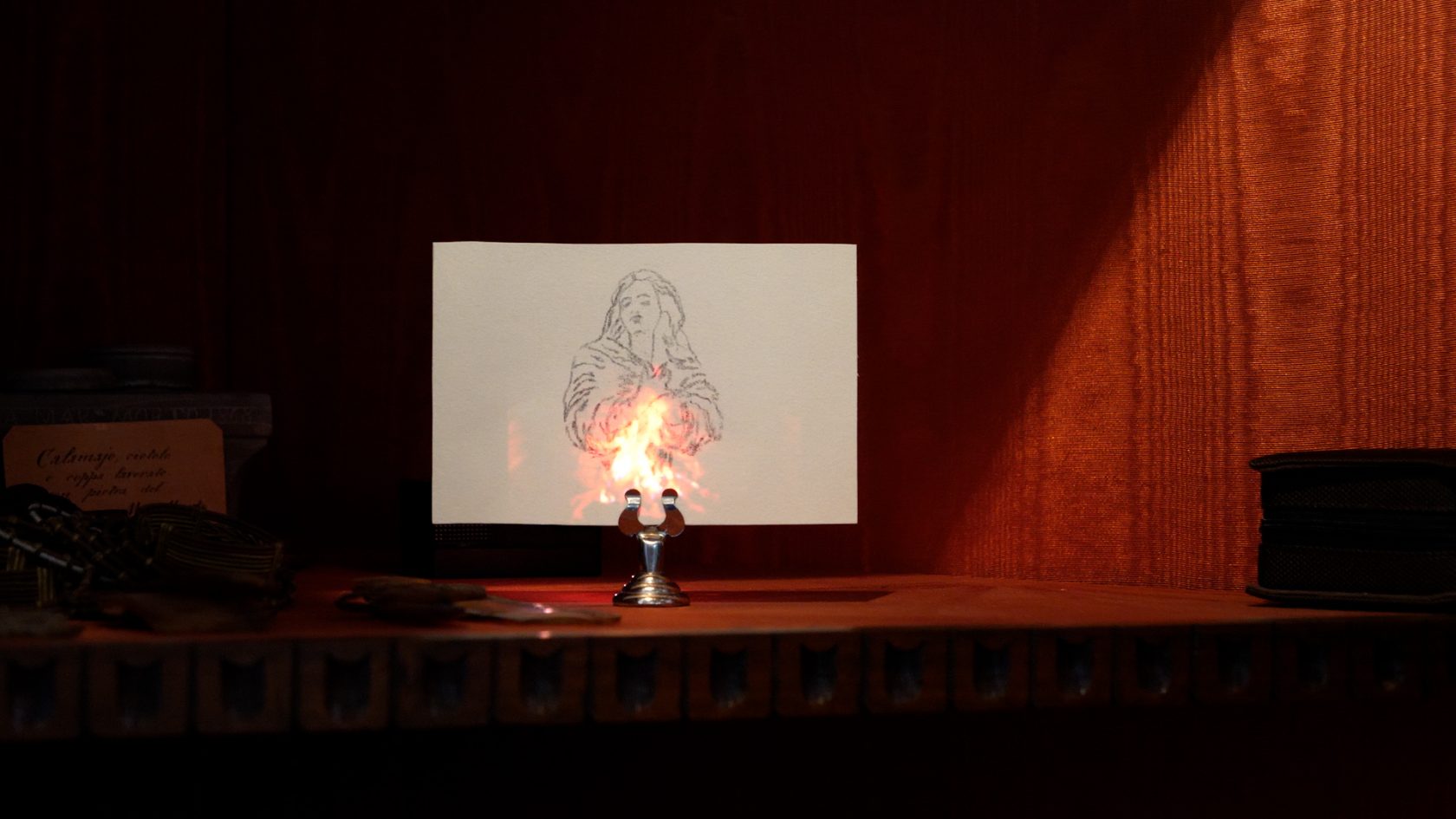
What would you still like to realise as an artist?
“I am developing two different processes. On the one hand, I am researching and preparing the Mobile exhibition space to present it in Italy this year. There, I will work with the Foundation of Museums of Siena to highlight the work of women in Sienese museums. This is a project that I developed in cooperation with other institutions. It grows and changes each time it approaches a different collection.
On the other hand, I have a very intuitive experimental process, linked to the concepts of memory and conservation, but in a poetic way. The project consists of an experimental ArtScience process that, through sculpture, installation and performance, reflects on memory, conservation in the private and public sphere and their intersection. The aim is to motivate, in a poetic way, awareness of how memory is constructed. Technically, I use the tools and develop the processes I started in the ArtScience Master at the Royal Academy of Art in The Hague.”
Stroom Invest Week is an annual 4-day program for artists who were granted the PRO Invest subsidy. This subsidy supports young artists based in The Hague to develop their artistic practice so that artists and graduates of the art academy can continue to live and work in The Hague. To give the artists extra incentive, Stroom organises this week consisting of studio visits, presentations and several informal meetings. The intent is to broaden the visibility of artists from The Hague through future exhibitions, presentations and exchange programs. Stroom Invest Week 2022 will take place from 7 to 10th of June.